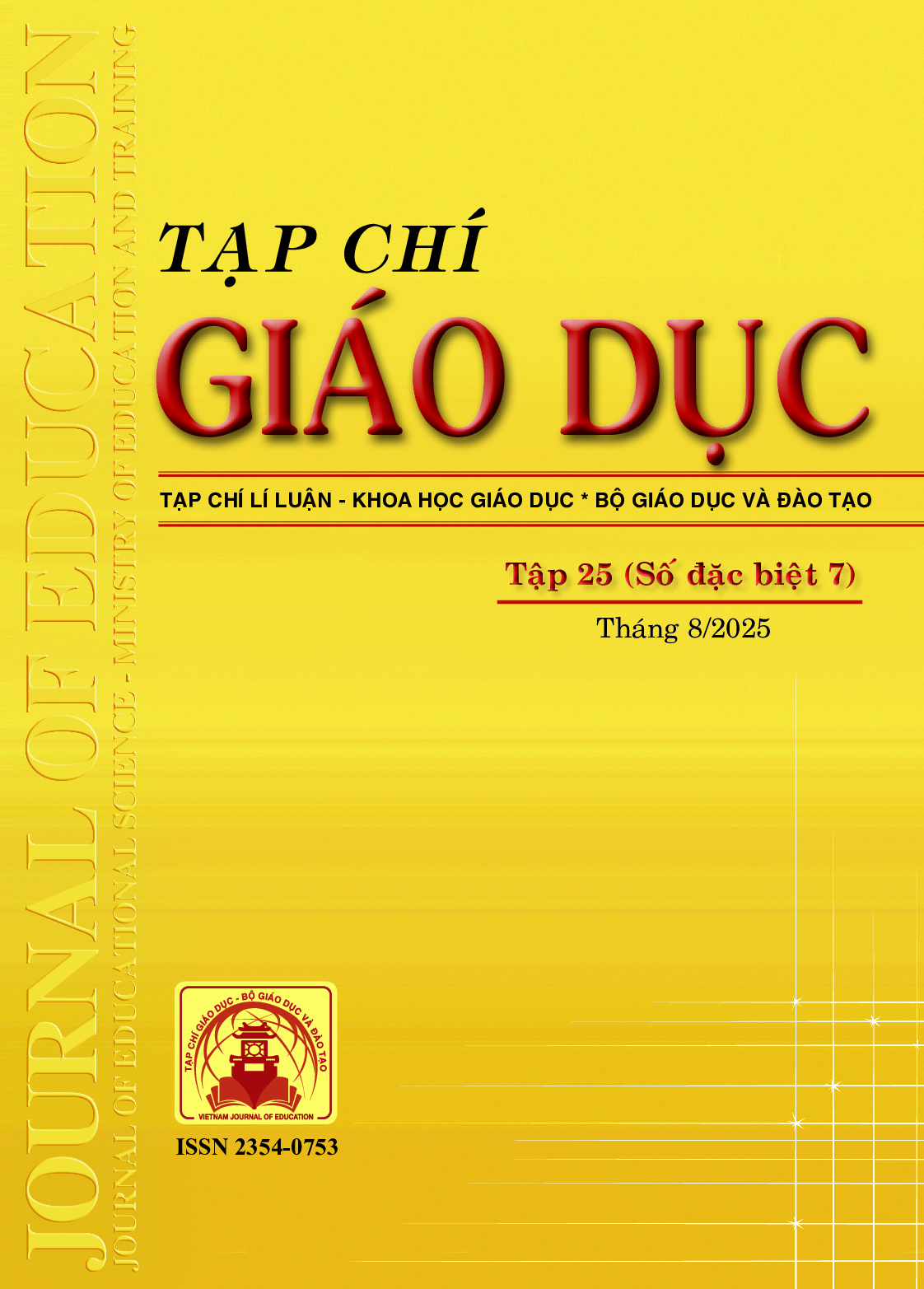Đào tạo sinh viên ngành Giáo dục tiểu học trong bối cảnh chuyển đổi số: Tiếp cận từ mô hình blended learning đối với học phần “Phương tiện dạy học” tại Khoa Sư phạm, Trường Đại học Thủ đô Hà Nội
Tóm tắt
In the era of rapid digital transformation, higher education in general - and primary teacher education in particular - demands comprehensive innovation in content, pedagogy, and technology. Blended Learning, an instructional model integrating face-to-face and online learning, has emerged as a viable approach to enhance training quality, develop comprehensive competencies, improve professional adaptability, and strengthen learners’ digital skills. This study investigates the application of the Blended Learning model in training Primary Education students at the Faculty of Education, Hanoi Metropolitan University, through the Teaching Aids course. Adopting a mixed-method approach, the research combines theoretical analysis with empirical data from the teaching process, including test results, academic performance records, and direct classroom observations. Findings reveal that Blended Learning not only improves knowledge acquisition but also fosters key. Its implementation for the D2021 and D2022 cohorts has yielded positive outcomes, underscoring the model’s potential for wider adoption and replication in primary teacher education at higher education institutions.
Tài liệu tham khảo
Bill & Melinda Gates Foundation (2015). Proof points: Blended learning success in school districts. Gates Foundation. [https://usprogram.gatesfoundation.org/news-and-insights/usp-resource-center/resources/proofpoints-blended-learning-success-in-school-districts](https://usprogram.gatesfoundation.org/news-and-insights/usp-resource-center/resources/proofpoints-blended-learning-success-in-school-districts)
Bonk, C. J., & Graham, C. R. (Eds.). (2004). Handbook of blended learning: Global perspectives, local designs. San Francisco, CA: Pfeiffer Publishing.
Bộ GD-ĐT (2025). Thông tư số 02/2025/TT-BGDĐT ngày 24/01/2025 quy định Khung năng lực số cho người học.
Cambridge Dictionary (n.d.). Blended learning. [https://dictionary.cambridge.org/dictionary/english/blendedlearning](https://dictionary.cambridge.org/dictionary/english/blendedlearning)
Google, Temasek, Bain & Company (2024). Vietnam e-Conomy SEA 2024 report. [https://services.google.com/fh/files/misc/vietnam_e_conomy_sea_2024_report.pdf](https://services.google.com/fh/files/misc/vietnam_e_conomy_sea_2024_report.pdf)
Horn, M. B., & Staker, H. (2014). Blended: Using disruptive innovation to improve schools. John Wiley & Sons.
Mandal, B., & Khatun, R. (2025). Blended Learning: A Systematic Review. National Journal of Education, XXIII(1), 363-376.
Ngô Thị Kim Hoàn, Phạm Thị Quỳnh Anh (2017). Sử dụng Blended Learning trong dạy học cho sinh viên ngành Giáo dục Tiểu học. Tạp chí Khoa học, Trường Đại học Thủ đô Hà Nội, 19, 81-89.
Ngô Thị Kim Hoàn, Phạm Thị Quỳnh Anh (2018). Sử dụng Blended Learning trong quá trình giảng dạy ở Khoa Giáo dục Tiểu học Trường Đại học Thủ đô Hà Nội đáp ứng yêu cầu đào tạo giáo viên tiểu học chất lượng cao trong bối cảnh Cách mạng công nghiệp 4.0. Kỉ yếu Hội thảo khoa học quốc tế “Tự chủ hoạt động khoa học công nghệ tại các trường đại học đáp ứng yêu cầu của cuộc Cách mạng công nghiệp 4.0”, Trường Đại học Thủ đô Hà Nội, tr 479-490.
Ngô Thị Kim Hoàn, Trần Thị Thảo (2022). Vận dụng hình thức học tập theo hướng chuyển đổi số của sinh viên Trường Đại học Thủ đô Hà Nội: Khó khăn và biện pháp khắc phục. Tạp chí Giáo dục, 22(số đặc biệt 10), 242-247.
Longman Dictionary of Contemporary English (n.d.). Blend. [https://www.ldoceonline.com/dictionary/blend](https://www.ldoceonline.com/dictionary/blend)
Shrivastava, A., & Shrivastava, M. (2022). An exploration of students’ perceptions on the blended learning mode in management education: A case of selected colleges in India. International Journal of Education and Development using Information and Communication Technology, 18(2), 207-214.
Thủ tướng Chính phủ (2020). Quyết định số 749/QĐ-TTg ngày 03/6/2020 phê duyệt “Chương trình Chuyển đổi số quốc gia đến năm 2025, định hướng đến năm 2030”.
Thủ tướng Chính phủ (2022). Quyết định số 131/QĐ-TTg ngày 25/01/2022 phê duyệt đề án “Tăng cường ứng dụng công nghệ thông tin và chuyển đổi số trong giáo dục và đào tạo giai đoạn 2022-2025, định hướng đến năm 2030”.
Trần Huy Hoàng, Nguyễn Kim Đào (2014). Tổ chức hoạt động dạy học theo B-learning đáp ứng yêu cầu đổi mới căn bản, toàn diện giáo dục và đào tạo sau 2015. Tập san Nghiên cứu Khoa học, Đại học Sư phạm Huế, 5, 66-74.
Đã Xuất bản
Cách trích dẫn
Số
Chuyên mục
Giấy phép

Tác phẩm này được cấp phép theo Ghi nhận tác giả của Creative Commons Giấy phép quốc tế 4.0 .












